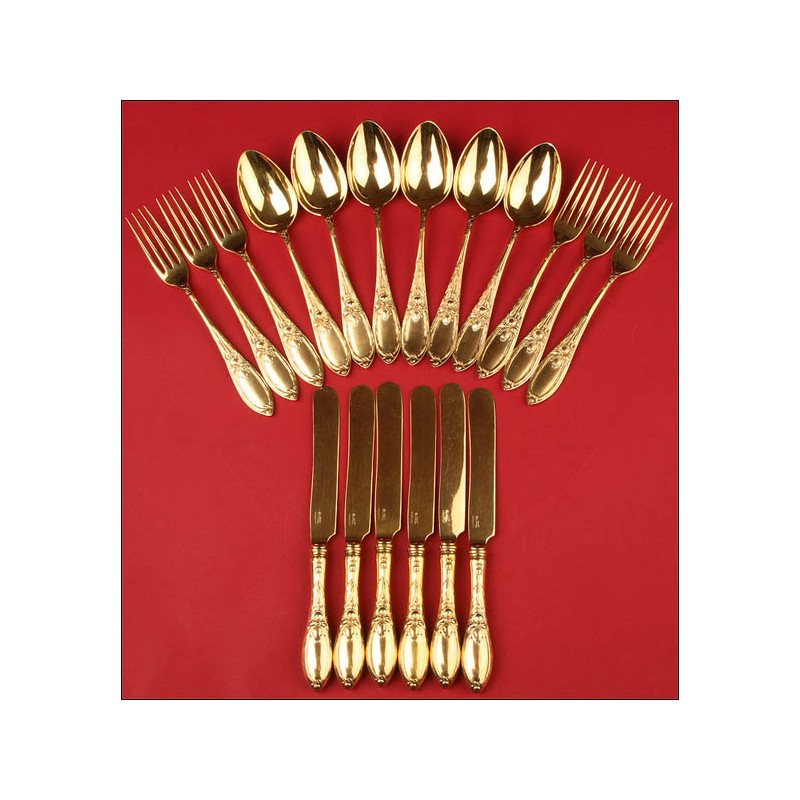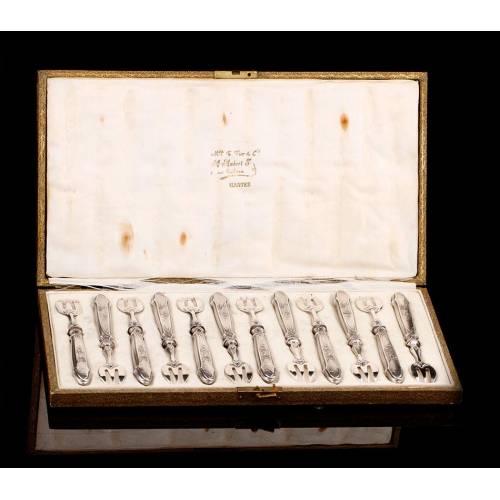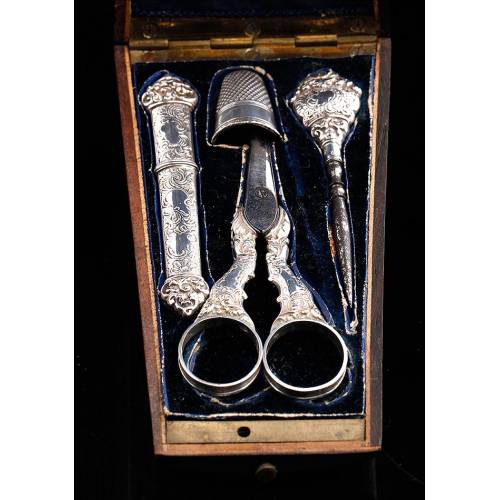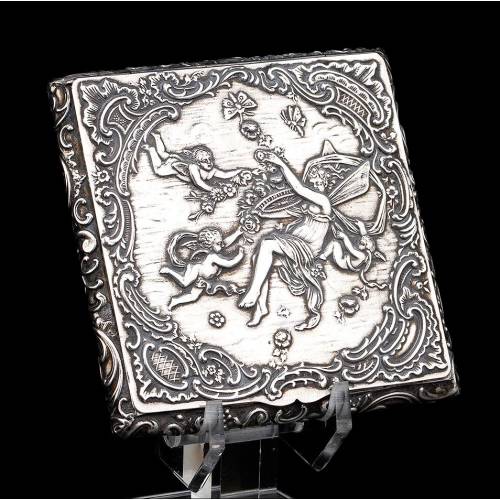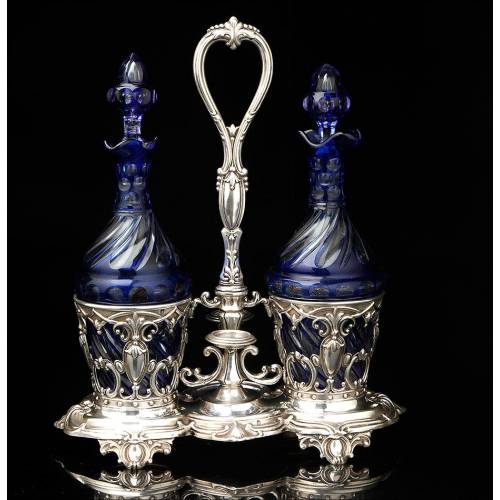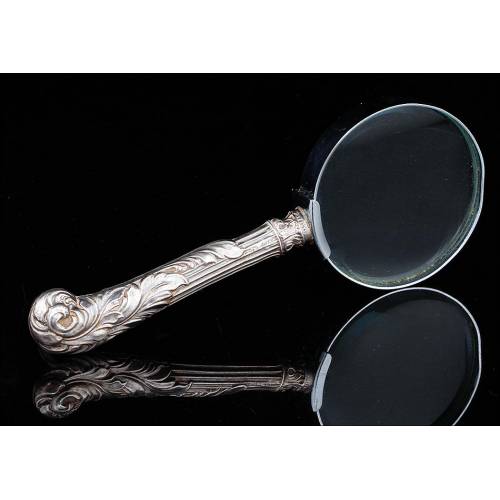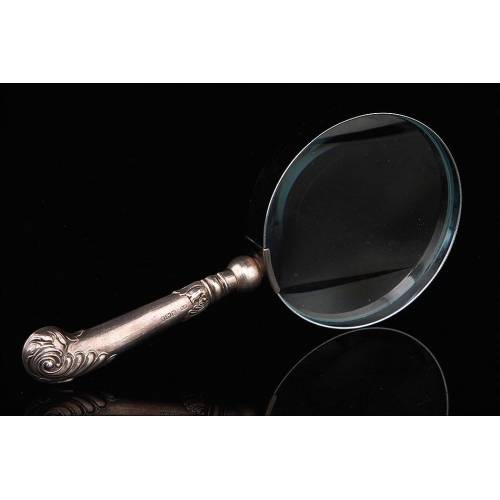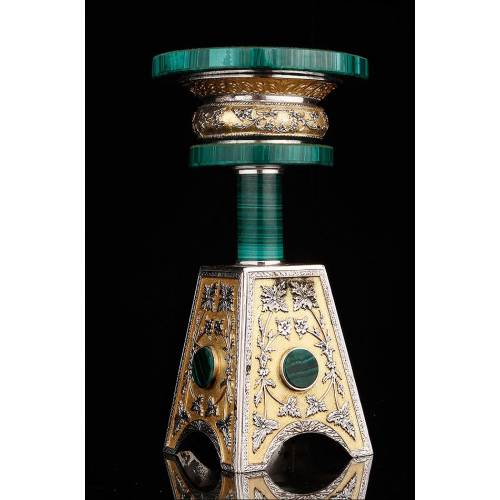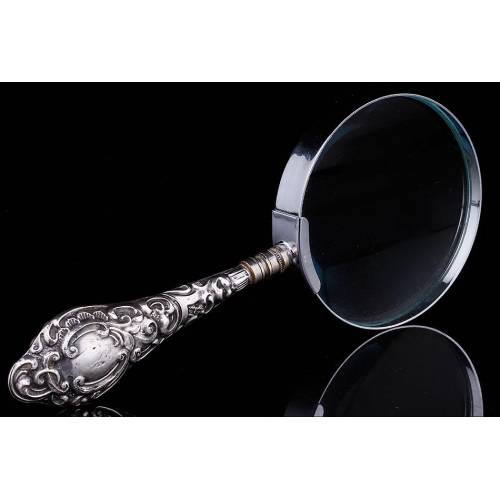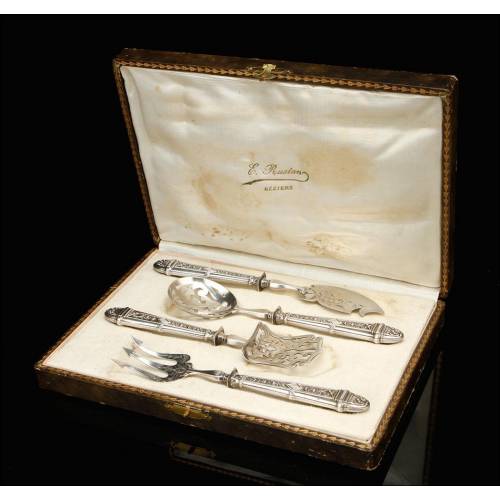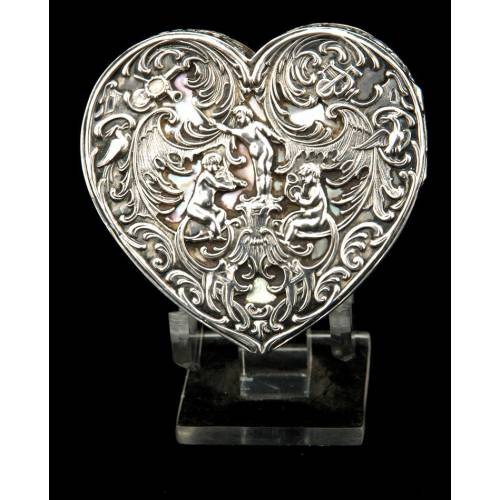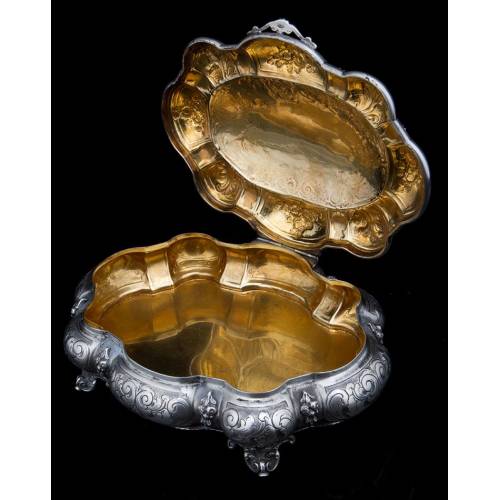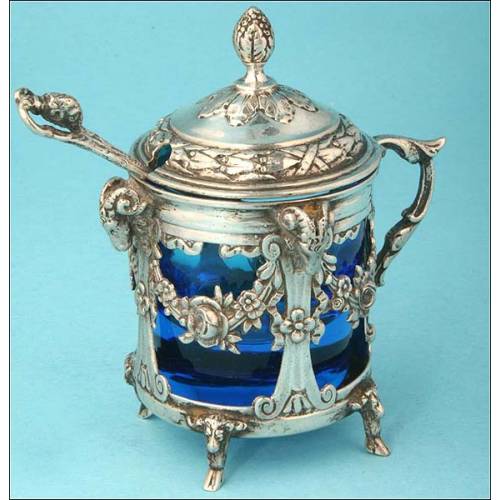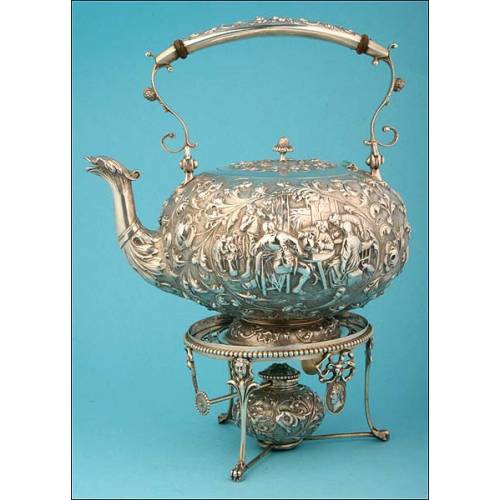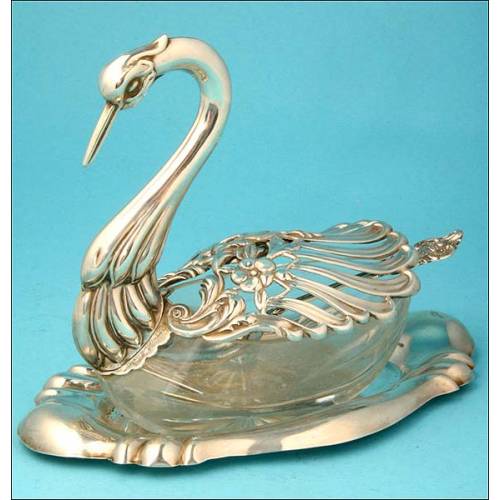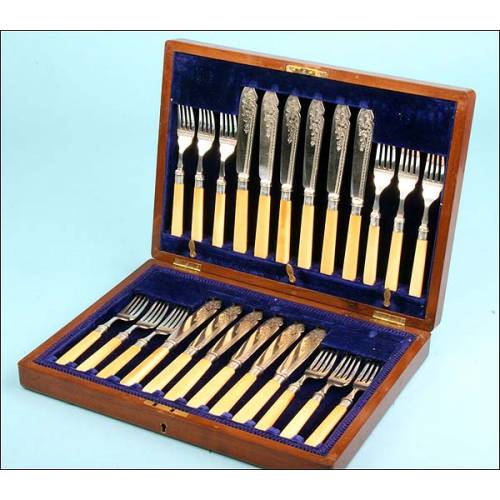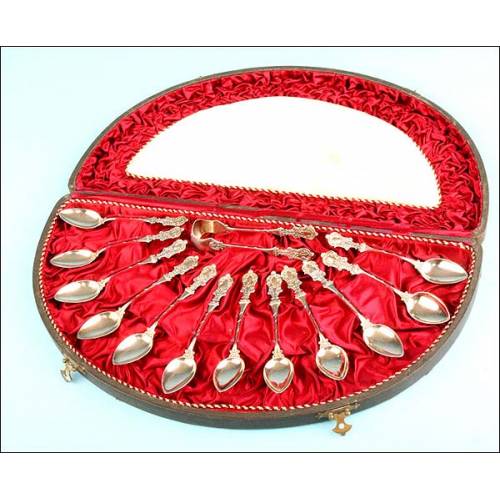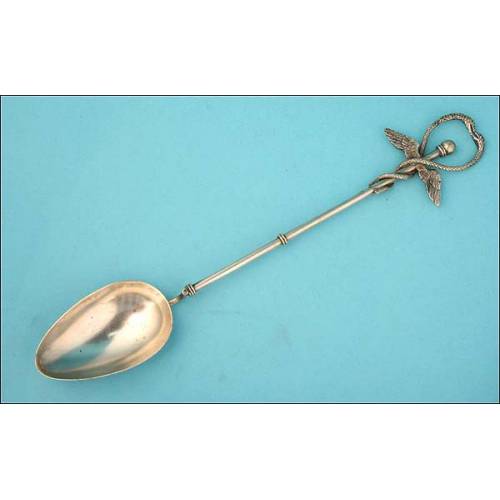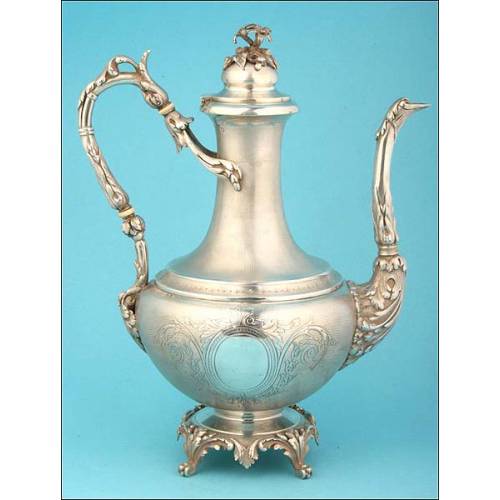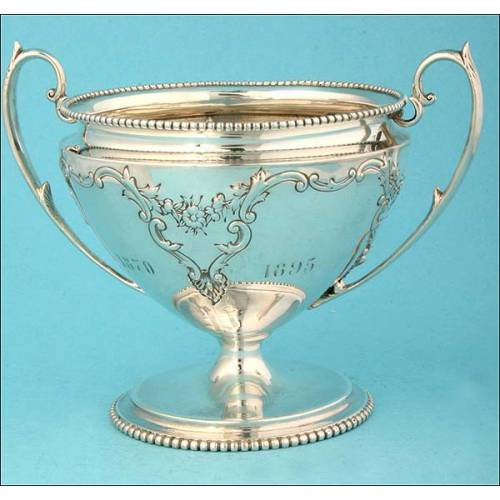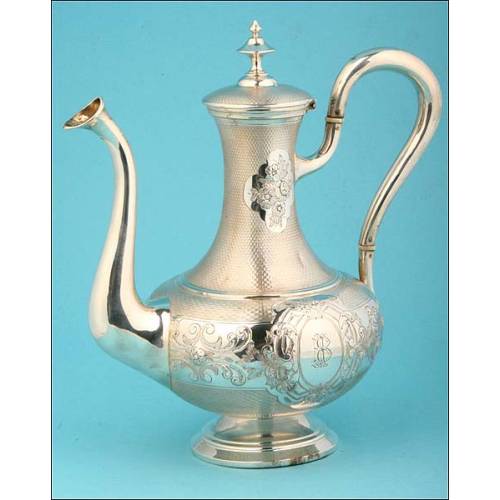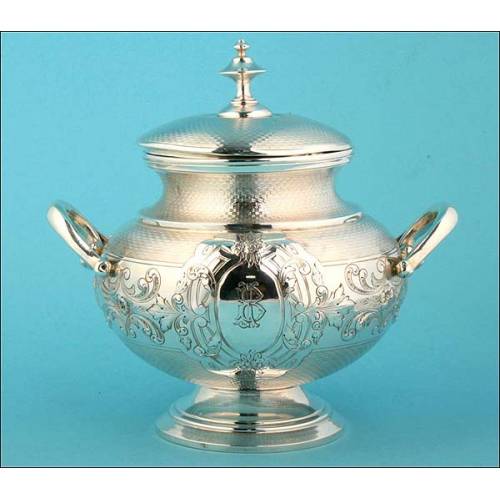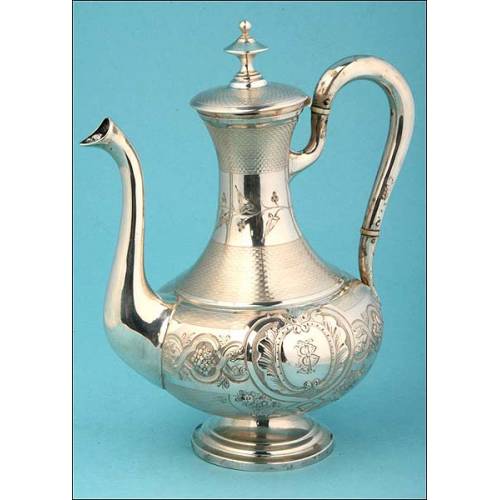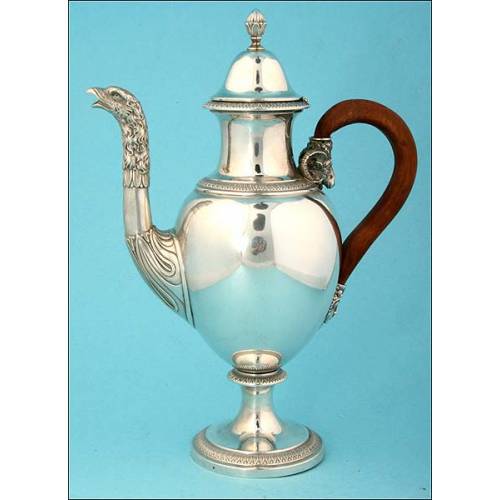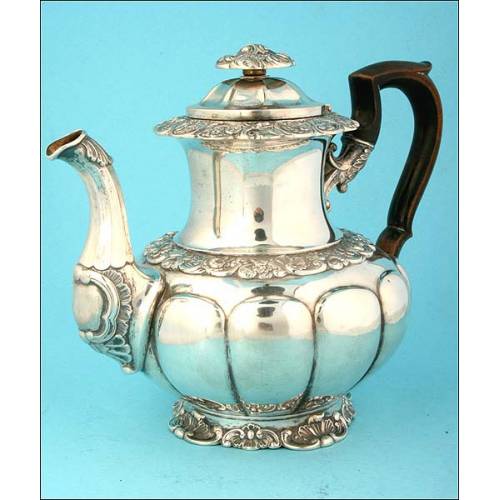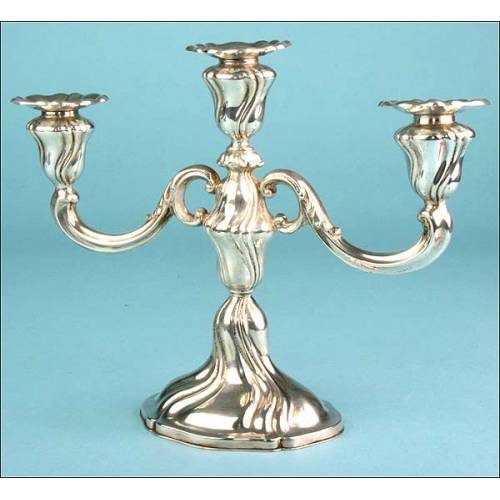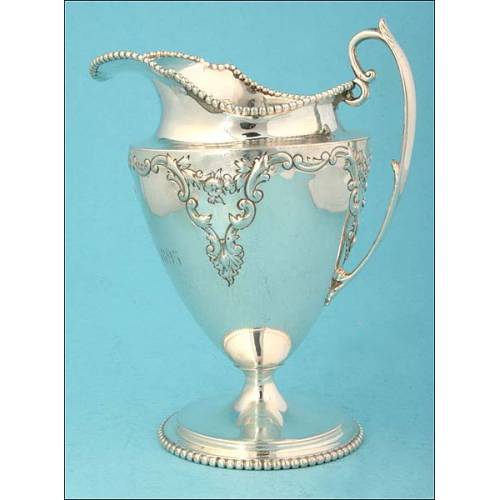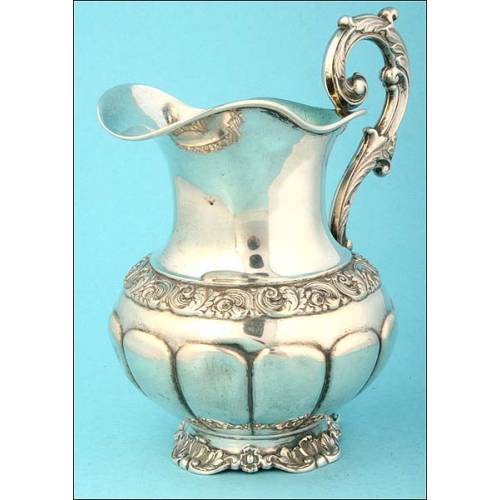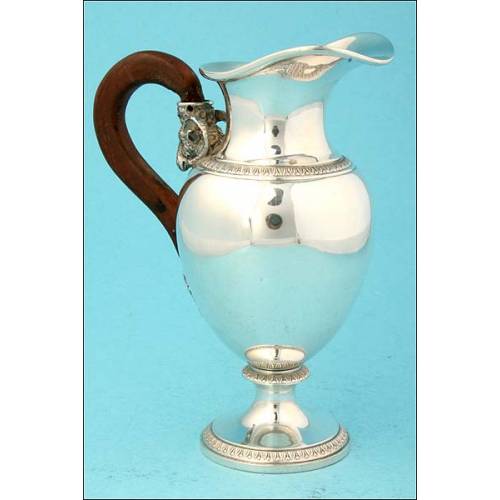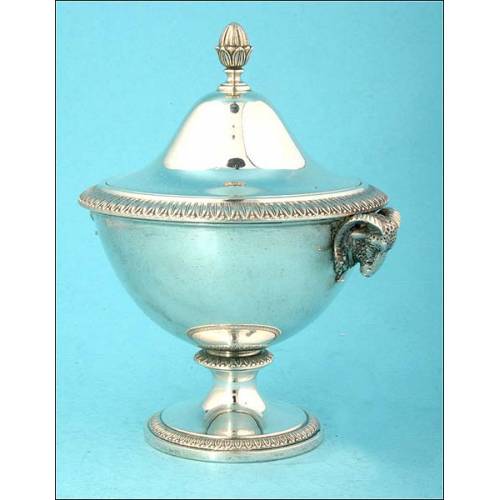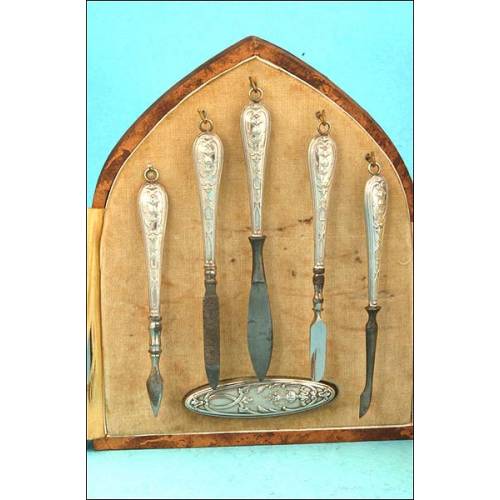J-377
Extraordinary Modernist Style Cutlery in Solid Vermeil Silver. Germany. Ca.1900
Extraordinary Jugendstil Style Cutlery. Germany. Ca.1900
Sold!
Extraordinary Modernist Style Cutlery in Solid Vermeil Silver. Made in Germany circa 1900. Silver 18 piece flatware with a fine and elegant gilding that certainly embellishes this fantastic and elegant piece. This is a cutlery for six guests made entirely in solid silver, even the knife blades, something not always common, as often for functionality, these were made of steel. It consists of 6 spoons, 6 knives with hollow handles and six forks with four tines. The knives are engraved with the German silver marks (moon, crown and 800) and the name of the silversmith: J.H. Werner. In Germany, a hallmark of a crown and crescent moon was introduced from 1888 to indicate silver purity of at least 80%. All pieces are decorated on the handle with a beautiful and delicate chiseled lily, which is clearly in line with the German Art Nouveau style. All parts are sealed, which attests to its value and antiquity. It is a very beautifully made cutlery, with a very defined style and an enormous decorativeness in all the cutlery. The concept of cutlery as such is relatively recent, specifically from the 18th century. Most of the spoons are made from the sixteenth century, and there is no evidence of the development of matching spoons until the late seventeenth century. Forks appeared later, in France in the middle of the 17th century, and with only two prongs at the beginning. The knife was the third to develop in England after the time of Charles II, where we find examples where the handle has sometimes been made of other materials, such as wood or ceramics. In fact it is in the handles of these three pieces where the decoration is carried out with the most varied and elaborate forms as in this case the fantastic floral decoration. The Jugendstil style (youth style) is a variant of the well-known Art Nouveau, which emerged in Germany during the last decade of the 19th century. The term came from the title of the magazine "Jugend" founded by Georg Hirth in Munich in 1896. The Jugendstil designers, such as Hermann Obrist, Richard Riemerschmid and August Endell, had very idealistic goals. They wanted to reform art and recover a simpler way of life that was less conditioned by commercial imperatives. They shared a marked optimism of youth and a great respect for nature, which they would transfer to all their artistic pieces full of stylized flowers and waves. This style will appear marked by a decorativism of sinuous and vegetal forms, but much more austere and demure than its French counterpart. The main difference that we find between the German and French modernist style in a piece like this is basically that, in a Nouveau style cutlery we would find all the contour of the handle decorated with flowers and plant motifs, while in the German, much more austere, a simple and delicate flower composes all that decoration. Magnificent modernist cutlery that will become a very special family heirloom. Size of the knives, 21 cms, of the forks and spoons, 18 cms.

